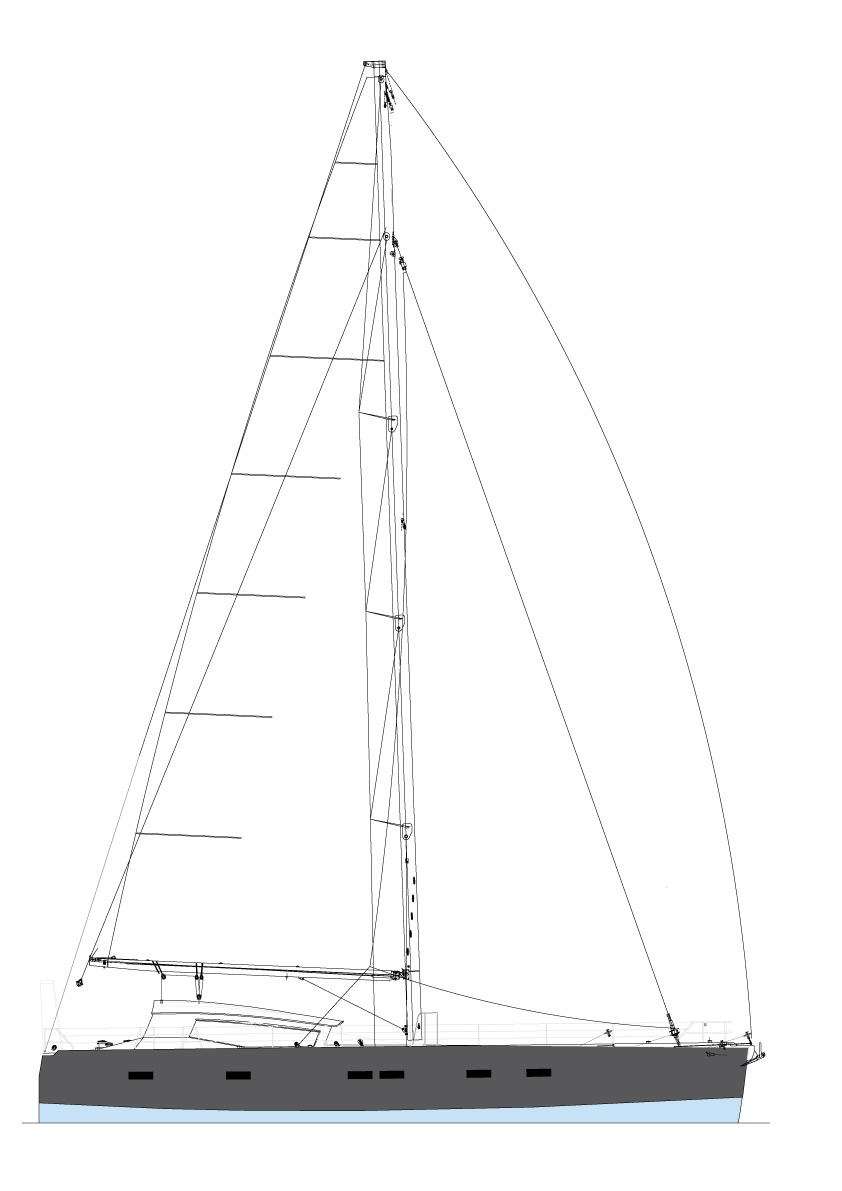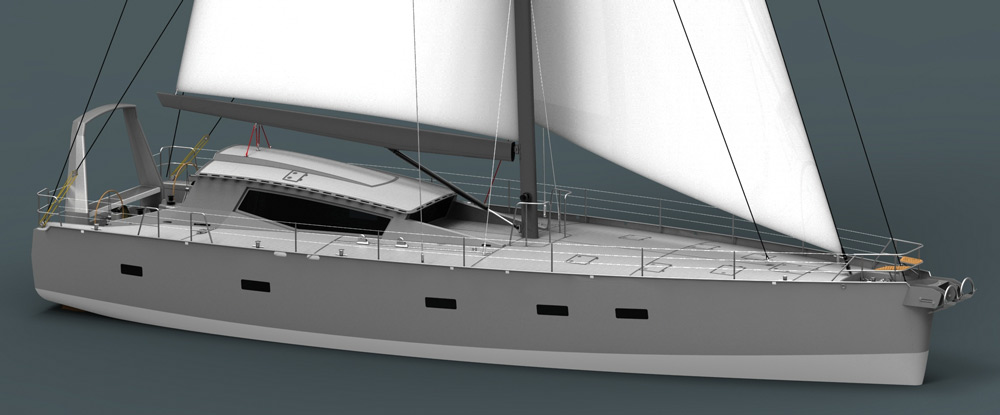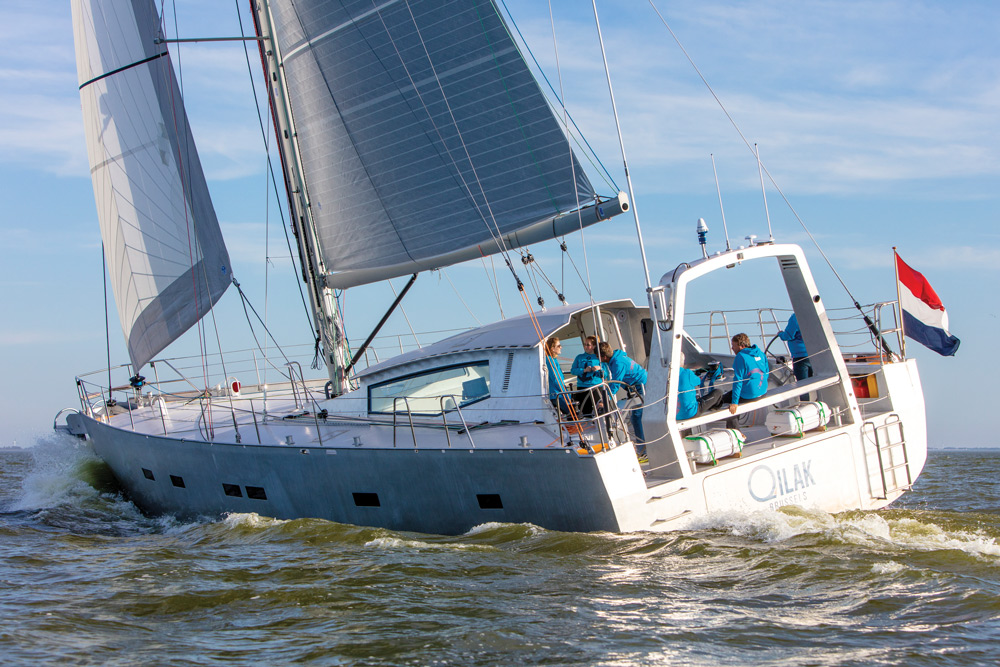Expedition Yacht Qilak 2
If cruising to the ends of the Earth is your goal, this is your boat
Here is an interesting design from Owen Clarke specifically designed for high-altitude cruising. I think that means you will need a very durable boat that will keep you safe, warm and protected. It’s an unusual looking boat. I would not call it pretty. I’d think of it as good looking the same way a Jeep can be good looking. Construction is aluminum. You can beat aluminum up pretty hard and while the resultant shape might not be attractive the boat will still be watertight.

This boat is lighter than I expected. I’ll use the “expedition mode” displacement because that’s the entire purpose of the design. With a displacement of 106,876 pounds the D/ L is only 175.5. L/B is 3.32.
There is a full-length chine just above the DWL with a slight rocker to it. The sections show a firm turn to the bilge and a quite flat bottom with no deadrise at all. The keel is a lifting fin and bulb with a draft down of 11 feet 9 inches and keel up 5 feet 9 inches. Max beam is carried all the way aft. It is an unusual hull shape. There is zero overhang aft and a tiny bit of rake to the stem. This boat will drag its transom at all speeds. But that shape gives you volume aft. Twin rudders leave room on centerline to stow a dinghy in the garage area aft. Note the huge radius on the stem in plan view.
The boat is laid out to sleep 11 people. There are two sleeping cabins with double berths and the rest of the berths are singles. In the forward sleeping cabins the singles are stacked berths. The main cabin is unusual in that it is divided by the keel trunk. To starboard of the trunk there are two small heads. Outboard there are several compartments that I think include a couple of shower stalls or maybe a big wet gear drying locker. Hard to tell from the drawings. I would think that if you were cruising where you could be wet much of the time, having a big space to dry and air out wet clothing would be extremely important.
To port of the keel trunk is the dinette. Looks like the crew of 11 will have to eat in shifts. To port and aft of the dinette is the galley. It’s big and tucked outboard of the pilothouse. The pilothouse is raised up for good visibility and has settees port and starboard. Looks like there may be a table in the pilothouse too. Two elevated pilot chairs aft in the pilothouse will be prime places to sit while underway. Note that the top of the pilothouse hangs over the cockpit about 4 feet to give some shelter in the cockpit.
There is a huge fo’c’sle with a watertight bulkhead fore and aft and a big chain locker forward of that. I think you can see the priorities in this design pretty easily. You will sleep comfortably. You will be able to be protected from bad weather and still see the view. Your clothes will be warm and dry. You will be able to prepare nice meals. That squatty sectional shape to the hull gives you interior volume where you need it.

The sailplan shows off the unusual profile of the boat. Freeboard is low at the bow so you can see over it. I’m not wild about the shape of the house. I can see they were trying to provide headroom in the sunken pilothouse while also getting some headroom under the overhang in the cockpit. It works. The SA/D is 18.95. There is a light air masthead genoa carried on roller furling and aft of that tack point a smaller, fractional working jib. The tack of the genny is far enough aft to allow you to fly an asymmetrical chute tacked to the stem with minimal interference. There are two independent ground tackle systems with the rode lead aft about 12 feet. Maybe this is why that stem radius is so big. It allows for the two anchors to fit nicely on the bow. There is tankage for 1,141 gallons of water and 1,017 gallons of fuel.
This is a fascinating design. It would not be a good boat for the Caribbean. But for the job it was designed for—the higher latitudes—it should be a dandy vessel.
LOA 66’10”; LWL 64’9”; Beam 20’2”; Draft keel down 11’9”, keel up 5’9”; Light displ. 76,148 lb., loaded 107,102 lb.; Ballast 20,503 lb.; Sail area 2,669 sq. ft.; SA/D 18.95; D/L 175.5; L/B 3.32; Auxiliary 150-hp; Fuel 1,141 gal.; Water 1,017 gal.
Our best estimate of the sailaway price: $3 million
Owen Clarke Design
Hamble, Hants
United Kingdom
44 2380 453107


Comments